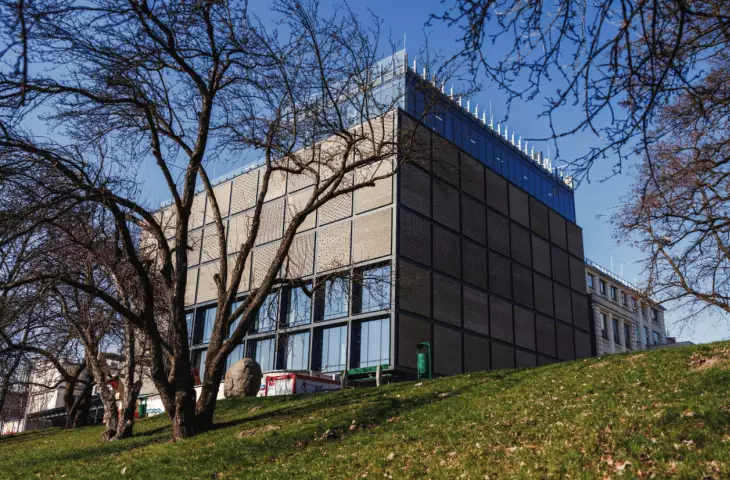A massive new building has sprung up on Kamionkowskie Lake, with an elevation reminiscent of a chocolate bar. Inside will be the largest museum of its kind in our part of Europe. It is also the largest investment by E. Wedel in a century.
Themuseum at the Wedel factory in Warsaw will open to the public in autumn 2024. According to the investor's announcement, it is to be the largest chocolate museum in Central and Eastern Europe. The entire implementation of the museum was supervised by Arup, the Warsaw-based BiM Architekci studio was responsible for the museum's architecture, and HOCHTIEF Polska is the construction contractor. The design of the exhibition itself at the E.Wedel Chocolate Factory was developed by WWAA. Also invited to cooperate was the Poland Without Barriers Foundation, which gave its opinion on the accessibility and inclusiveness of the place.
Detail of the facade
© E. Wedel
It is not only the size of the museum and its architecture that is to be unique, but above all the fact that it is connected to the E. Wedel. The architectural concept of the museum has been maintained in a style referring to sweets and strongly refers to the Wedel tradition. The simple facade, divided into square modules filled with brown bricks arranged in various motifs, is meant to evoke associations with a chocolate bar. However, literalism has been avoided here, the references are subtle, and the expression of the building itself is very contemporary. The building will be used not only for presentation and education, but also for the creation of chocolates and the development of new recipes.
Detail of the facade
© E. Wedel
Part of the construction is the result of the adaptation of existing factory buildings to reduce the building's impact on the environment. The museum and factory will operate in a converted silo building that was formerly used to store cocoa beans. The remodeled building will perform production tasks anew and at the same time serve as a tourist attractor. Inside will be an interactive exhibition based on the senses of taste, smell and textures. A terrace is planned for the museum's roof, which will offer views of the Warsaw skyline. Inside the building there will also be a production area, a research and development laboratory and a chocolate pump room.
Bird's eye view
© E. Wedel
Therenovation and expansion of the silos building in Warsaw's Kamionek district and its transformation into a part of Wedel's museum and factory is an example of the application of an environmentally friendly approach in construction. The silos used to be used to store cocoa beans, but were abandoned decades ago to reduce the city's emissions. Now it has been adapted to meet new needs, using construction in the underground and zero level sections. Such measures are increasingly important in the construction process, especially because of climate change. Arup's comparative studies show that creating new construction emits up to 180 percent more carbon dioxide and 47 percent more greenhouse gases over its lifetime than retrofitting. During the work on Wedel's new construction, we were able to reduce this significantly. As part of the project's implementation, we also participated in a workshop with the investor on the use of technical solutions to reduce the facility's environmental impact and increase accessibility for people with disabilities ," says Maciej Maj, Senior Project Manager at Arup.
Bird's eye view
© E. Wedel
This is the second investment of this type in Warsaw's Praga district in which Arup is involved. The Museum of Polish Vodka opened on the site of the former Warsaw Vodka Factory "Koneser" in 2018. In the case of the development of the museum and the Wedel chocolate factory, the role of the place and the brand in the functioning of Praga was widely referred to. The designers intended the building to become a sweet part of the district's landscape, reminding of the origins of Polish Wedel.
View from the park
© E. Wedel

































